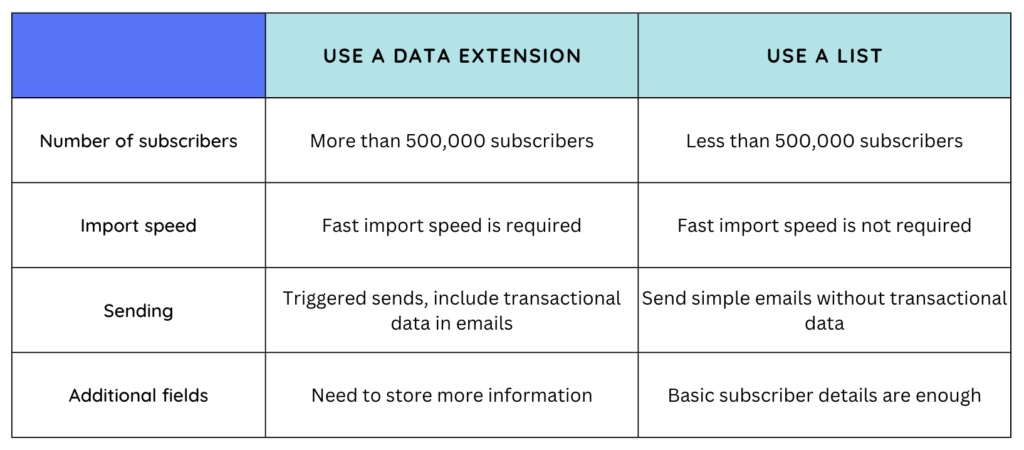
Salesforce Marketing Cloud is a comprehensive digital marketing platform automating marketing activities across various channels. Organizations utilize it to consolidate all marketing channels, allowing for the centralized management of personalized messages delivered at optimal times through email, social media, mobile apps, SMS, and websites. Despite being a Salesforce product, Marketing Cloud operates independently, using connectors to synchronize data between the core Salesforce platform and the Marketing Cloud account. Its feature-rich capabilities become apparent once integrated, showcasing its power in enhancing marketing strategies. Within Salesforce Marketing Cloud, managing subscriber data involves two primary methods: Lists and Data Extensions. Lists offer limited functionality, imposing constraints on storing and relating subscriber information. In contrast, data extensions provide complete flexibility, allowing for more robust storage and relationship structuring of subscriber data.
Each method has its own set of advantages and disadvantages. This enables marketers to choose the most suitable approach based on their specific needs and preferences. Here are the differences between data extensions and lists in Marketing Cloud.
Lists in Marketing Cloud
A List in Salesforce Marketing Cloud serves as a grouping of subscribers designated to receive your communications. To effectively target your email communications, you have the flexibility to create multiple Lists, facilitating segmentation of your subscribers. Each List stores essential information such as the email address and subscriber status (Active, Bounced, Held, Unsubscribed) for every subscriber. Additionally, there is the option to define a subscriber key, along with profile and preference attributes if desired. The limitation of lists in Salesforce Marketing Cloud is that they can only store basic information such as the first name, last name, email address, status, and a subscriber key for each subscriber.
Data Extensions in Marketing Cloud
Similar to lists, data extensions in Salesforce Marketing Cloud serve as a grouping of subscribers intended to receive your communications. The flexibility allows you to generate multiple data extensions, facilitating the segmentation of subscribers for targeted communications or to accommodate relational data storage as needed. However, unlike lists, you can create data extensions for any data that you want to store. Moreover, you can add any field that you need. For instance, you can create a data extension that stores order details.
Data extensions in Salesforce Marketing Cloud are commonly categorized as either Sendable or Testable. The Sendable designation enables the use of a data extension for sending emails, while the Testable classification is for testing emails. Notably, a data extension has the flexibility to be both, either one, or neither, depending on the specific requirements.
Marketing Cloud Lists vs. Data Extensions
It is important to understand when to use lists and data extensions. Here are the differences between lists and data extensions in Marketing Cloud.

Click here to read more posts about Salesforce.
This article doesn't show up on your home page for some reason.
Thanks for letting me know!